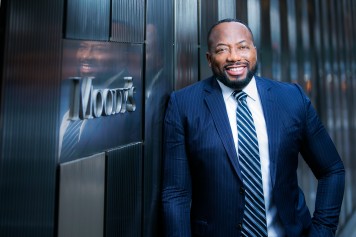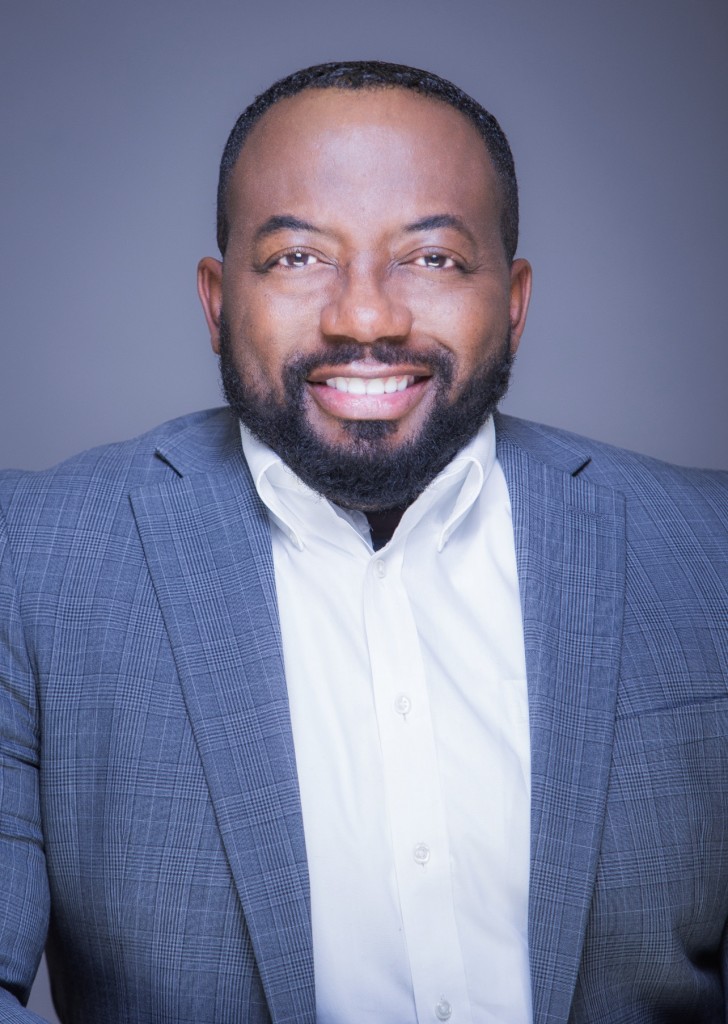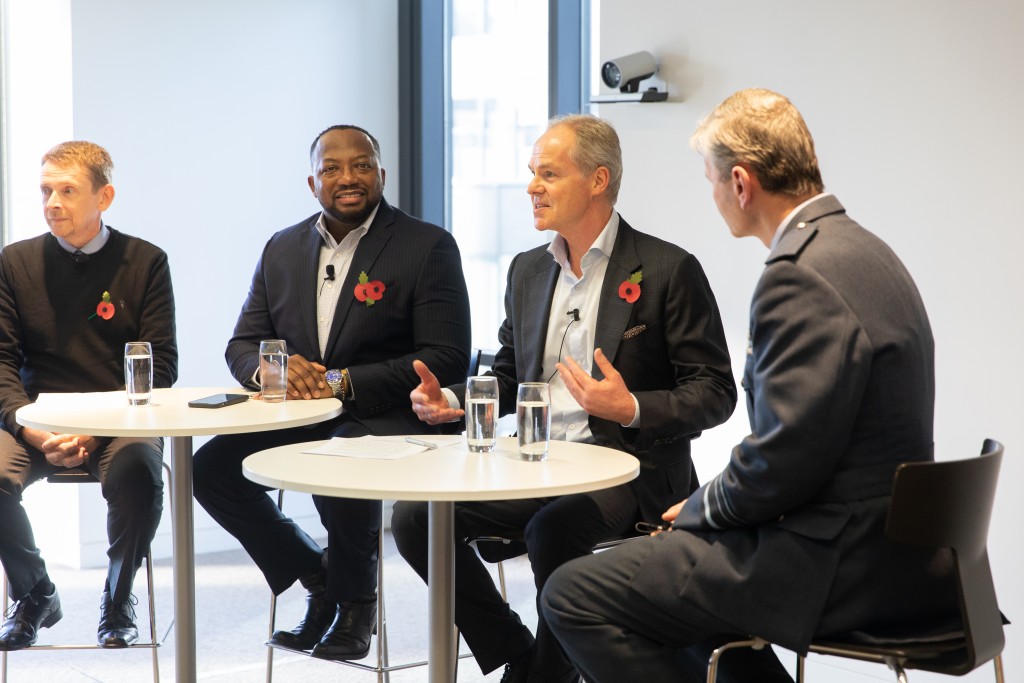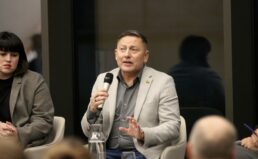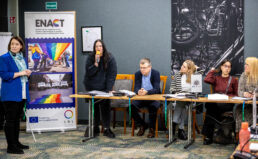DK Bartley, Chief Diversity, Equity & Inclusion Officer at Moody’s, the global credit rating and financial services company, is keenly responsible for Moody’s acceleration of D&E&I as a business imperative and the international Diversity and Inclusion strategy for its internal and external framework. Having ample experience in advancing D&E&I he transformed the employee value proposition for Moody’s and various international companies in the past.
We had a chance to converse with DK Bartley about his background, the importance of creating the best working environment for all employees and Moody’s support for the Baltic Pride 2022 in Vilnius.
Could you tell us a little bit about your background? What do you like most about your work in Moody’s?
I am a subject matter expert in talent acquisition and diversity, equity, and inclusion. I started to work on diversity in high school in the United States. So, I have that rare experience of education around diversity that goes beyond the workplace and beyond the classroom. In my career I’ve worked with some of the best high-profile companies in the world, such as Microsoft, Ralph Lauren, Louis Vuitton, Mercedes Benz, Dentsu, ABC News, Disney and have been focusing on diversity. I could go on and on, but it is relevant, because it gives me a very good comparative analysis on what are best practices, on what works for diversity, what works in talent and, more importantly, what doesn’t work.
Moody’s is a big international company. What kind of practices create the best working experience for its employees?
At Moody’s we believe in two things. First and foremost, D&E&I is part of everything that we do. Inclusion is part of our company’s core values. It existed even before Moody’s became a Fortune 500 company and even before it became an international company. So, it’s still with us that we are a company based on inclusion. That is why diversity, equity and inclusion must be a part of our business, the way we develop business, the way we interact with our customers, the way we manage and select employees, the way we look at talent. It really is a part of everything that we do. So that’s the first thing.
The second thing is we believe that if D&E&I is part of everything that we do, you as an employee should be able to bring your authentic self to work. What does that mean? That means that you don’t just show up to work to say I’m going to fit in the mold, or a box of what Moody’s wants me to do and how Moody’s wants me to work. But if I come from a background where I look differently, I talk differently, I sound differently, I interpret information differently, I have a different lifestyle, I can feel that I can bring it to work within reason. You’re able to bring that authenticity of your uniqueness to work and feel that it will be respected, honored, and embraced. That’s what it means for us when we really talk about the fact that we’re a global company and we have so many different ethnicities, cultures, races, etc.
Lastly, we have an Embassy Policy and that’s very specific to our LGBTQI+ employees. That means that if you’re LGBTQI+ or if you’re different in any other way, once you are at Moody’s we want you to be able to feel free to tell us that and it will be respected. If that is a part of who you are in the way you identify yourself, we want you to know that we embrace it and honor it. We think it makes you unique and special in a sense that you are willing to share that level of difference to us. We call it the Embassy Policy, because we want you to feel that within our four walls you have a safe space to be LGBTQI+ or anything else that you feel may be the way that you identify.
Could you tell me more about Moody’s diversity fostering practices? What kind of practices are implemented to foster diversity and create a welcoming atmosphere for its employees and customers?
We’re all about communicating diversity as employee value proposition. What that means is before somebody comes to Moody’s as an employee, before you start to work with Moody’s as a potential customer, before you want to partner with us, we want you to know that we believe that diversity makes us a better company. It makes us more focused, more organized, more creative and, most importantly, able to create and come up with better decisions.
We’re not a company that sells cars, trains, or automobiles – we sell ideas. And because of that the more diverse ideas we have, the more creative we are and the better decisions we can make for our customers. So that is diversity. And that diversity represents innovation, a level of diversity of thought, and it also represents measurable diversity. Because if we have less diversity, the assumption would be that we have fewer creative ideas.
So, for us that’s why it’s important to put all of these into a functioning idea which creates ultimately the environment that breeds diversity. We’re always thinking what it is about you that’s different, that could add value to Moody’s. We want you to come work with us, because you are different and we’re going to get a better understanding of someone like you who may be our customer or client. All of that creates a different kind of behavior and ultimately a different kind of best practice as an organization which is focused on D&E&I.
What are the specific practices implemented to foster inclusion of LGBTQI employees?
We have a Human Rights Statement that we make as a public part of our corporate policies and procedures. As I’ve mentioned before, we have an Embassy Policy which means that in countries where LGBTQI+ is not legally permitted, we still would like those people to feel welcome. If you’re LGBTQI+ and you’re not out for governmental reasons, we want you to be able to express yourself freely and tell us or share with us how you would like to be identified. So that’s another policy that we have as a company.
We also have a variety of benefits. All our benefits where it’s legally permissible are eligible for LGBTQI+ people, which means that they get things like the same fertility benefits. There are some countries where we support gender confirmation procedures. On top of that we have LGBTQI+ business resource groups (BRGs) all over the world. It’s a huge befit when you consider that the health and welfare of different people and different countries is not the same. As I’ve mentioned we have BRG that works with that country and that benefits group on health and welfare pension, having your family medical leave. So BRG within each country is a great group that creates a structure where we can get feedback from our LGBTQI+ employees and have a better understanding of what are the priorities for our LGBTQI+ employees.
Lastly, we have several of our LGBTQI+ Executives on LGBTQI+ Boards. In the United States we have Scott Kenney who is a part of our Executive Leadership Team and Scott is on the Board of Hetrick-Martin Institute, a US based global organization where they provide schooling and housing for young LGBTQI+ people who are homeless. And we have a variety of other LGBTQI+ senior executives that also are on variety of boards all around the world. So, we’re very heavily involved in being the change that you want to see by having our executives on board.
We’re also a part of the Stonewall and Out Leadership organizations. We’ve done an endless amount of programming with them that incorporate both training and development of our employees on LGBTQI+ experience, we’ve done events where we celebrate Pride and the idea of what Pride is about. We’ve also done surveys where we looked at what equity means and how we could be a much more inclusive company. These surveys look at our policies, procedures, business strategies, human recourses. They look at all these things and collectively come up with a way in which they can standardize our achievements and what else we need to do.
And, most importantly, we have achieved a 100 percent on the Human Rights Campaign Index as employer that supports LGBTQI+ employees’ rights for 11 years in a row. A 100 percent means that we are meeting all the things that a company of our size and recourses should be doing to promote, advance and attract the LGBTQI+ employees.
What kind of LGBTQI initiatives is Moody’s supporting worldwide? Do you think it is important for a company to support LGBTQI human rights?
I absolutely think it is important to support human rights and I was adamant about creating the Human Rights Statement that we made to make sure that people know what we are about, what are our values and what we represent as a global organization. We want to be sure that you as an LGBTQI+ person know that we support LGBTQI+ rights and we support those values quite purposefully.
More importantly, we have implemented global diversity, equity, and inclusion training. That global training not only talks about what you could do to be more functional with race, gender and LGBTQI+ employees. All our employees starting from our CEO have gone through this training that talks about the LGBTQI+ experience and that’s where that equity piece comes in place. It’s not just based on ethnicity and gender. It’s also because we have people of different identities, sexual orientations and we want to be quite purposeful and ensure that they are actively and effectively a part of our organization. It’s important that the training talks about the way we behave as a company, how we interact, how we relate to each other. It’s a different way of thinking that we believe has been extremely effective in educating our employees how to work better with people that don’t look like you, sound like you, come from your same background, and have different experience. We want our employees to embrace the concept of difference and the concept of how we function.
What kind of challenges have you encountered when implementing inclusive practices in Moody’s? What have you learned from it?
Because inclusivity is a part of the way we work, I wouldn’t say that we’ve experienced challenges when implementing it. Everyone has always been very welcoming of change and experience. Me coming on board was to implement these changes and everyone knew it. They did not know how much change; how impactful it’s going to be. My strategy was to go from awareness to impact. When you’re going from awareness to impact, you don’t really have people opposing. When you are trying to succeed, do something different and ensure that there’s a level of change management and culture change, you must anticipate that it’s going to be a little bit different. So, I wouldn’t call it a challenge. Those are the things that I think many people stay up for at night – the culture change. How is the change going to affect our business? How we will be able to bring everyone along? What are the long-lasting effects of these changes?
We’ve exceeded all expectations. The culture change has made our company more profitable, reduced the number of people leaving the company, because they have a clear understanding of how being diversified adds value to our company and contributes to our bottom line. The changes we’ve made were not segmented. For example, our LGBTQI+ employees are no different from our black employees, or our women, or our mental health employees. Why? Because we’re doing all of diversity at the same time. And when you do it like that: we are all in it together. There’s no one group that’s singled out. It’s shared responsibility. We have allies, people who believe in a change and are actively supporting to help us make the change. And a lot of these people are white men. And what’s great about it is that they then work with the advocates. We have various BRGs representing minorities, but collectively they speak like a majority. That really helps in overcoming any obstacles and allowed us to really move from awareness to impact. And we’ve learned that doing things collectively and collaboratively really makes a big difference.
Lastly, we have a structure of governance body of me, and my team and we have created Diversity Councils. We have an Executive Council at the top which is made up of the senior level people and we have Regional Councils that are ground zero diversity spokesperson for that region. For EMEA region, we know that in Lithuania these are the diversity priorities, these are the LGBTQI+ priorities, because we have local people there that then revert that back to the Diversity Council that is in that region. It’s a very well-organized machine, but we have lots of quality assurance checks when it comes to LGBTQI+ and diversity. It really is a part of who we are as a company. It allows us to not only to have a clear understanding of what the priorities are and how we organize ourselves, but also to have a level of transparency regarding what’s working and what’s not working.
What kind of initiative when it comes to fostering diversity and inclusion are you most proud of?
I am most proud of the fact that everybody at Moody’s is welcome and based on the feedback that we receive from our training we have an extensive amount of people and professionals that support diversity both when they’re at work and when they’re not at work. You know you have authentic D&E&I when your employees are speaking about diversity and doing actions around diversity, equity, and inclusion not just because they have to, but because they want to. We received a lot of awards and recognition for that. We’re proud of the work that we do in D&E&I and the fact that we’re being recognized outside of the company.
Moody’s in Lithuania is supporting the Baltic Pride 2022. What message would you like to send to Lithuanian LGBTQI community on upcoming Baltic Pride?
Moody’s is the best place to work in Lithuania. We welcome all people, not just LGBTQI+, but all people that feel different and want to be included and join the company if they have the right skills for our jobs. We welcome them no matter where they come from, what they look like, or what their sexual orientation is. We welcome all people from all forms of the diversity spectrum. And we’re quite proud of that.
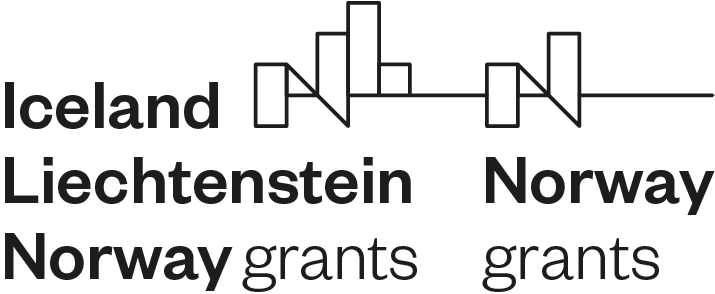 Article was prepared under the framework of the project “Mainstreaming equal opportunities in twin cities (Vilnius-Oslo)”. The project is funded by the Fund for Bilateral Relations of the EEA and Norwegian Financial Mechanisms 2014–2021.
Article was prepared under the framework of the project “Mainstreaming equal opportunities in twin cities (Vilnius-Oslo)”. The project is funded by the Fund for Bilateral Relations of the EEA and Norwegian Financial Mechanisms 2014–2021.

